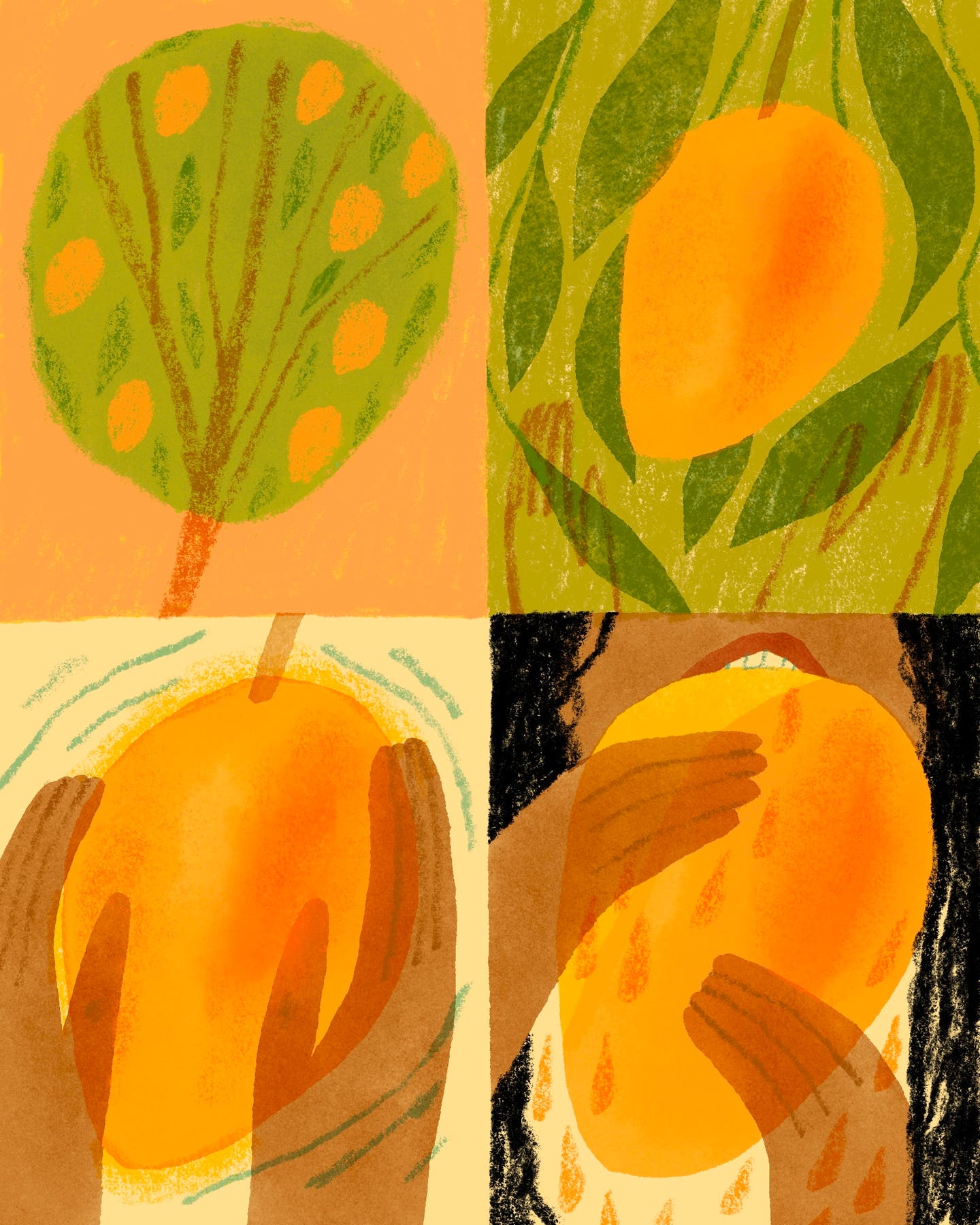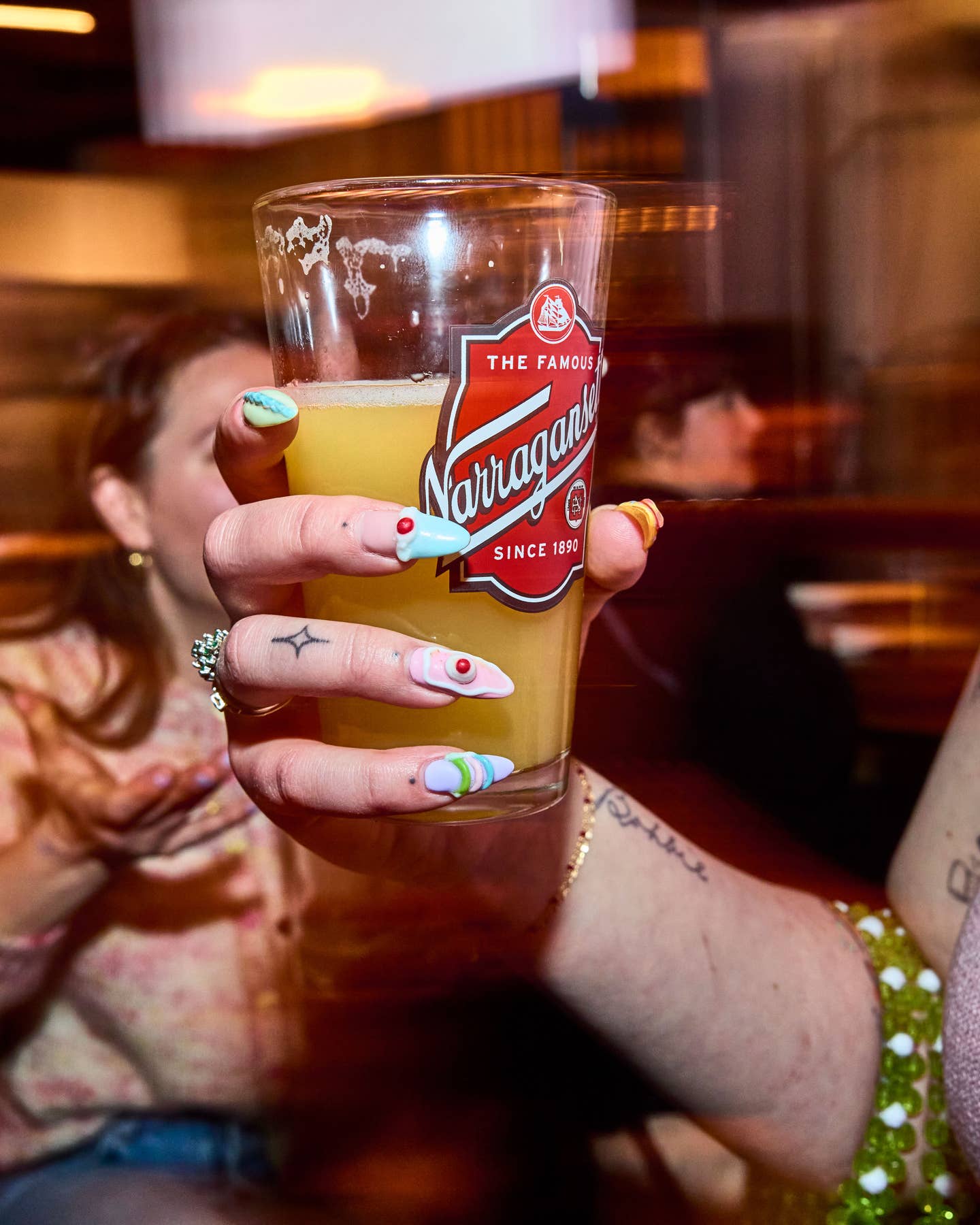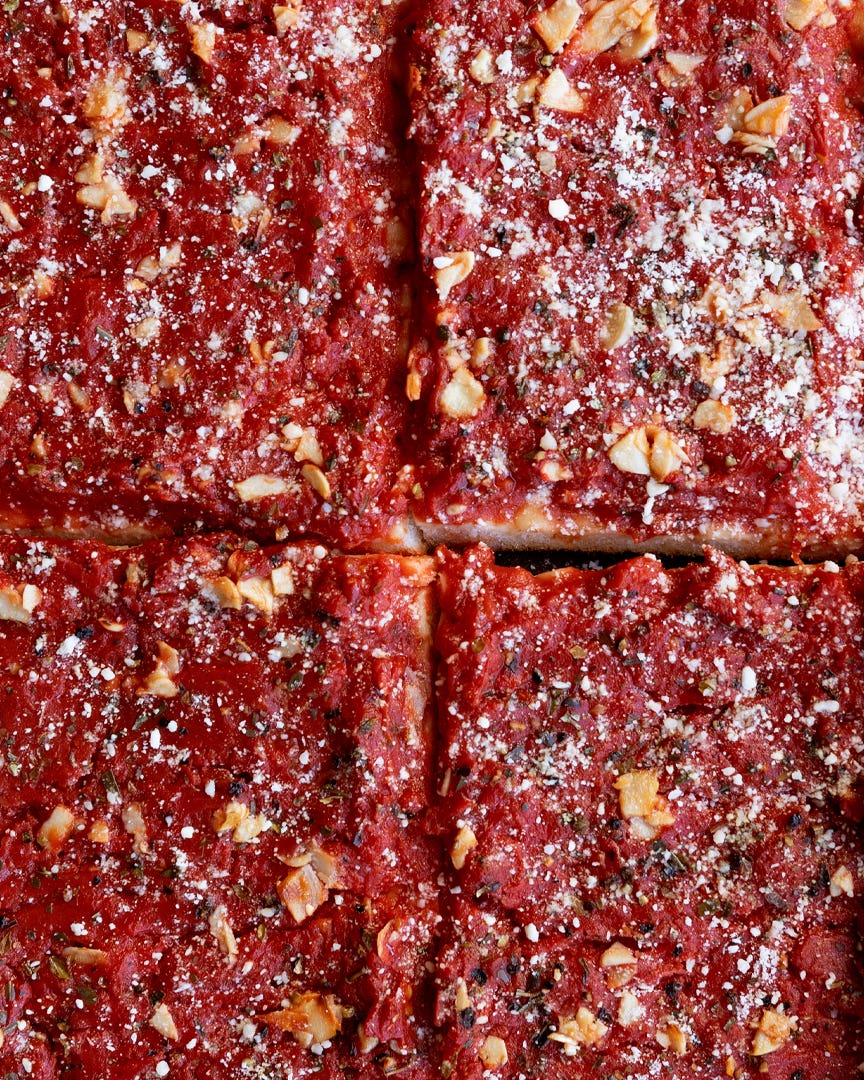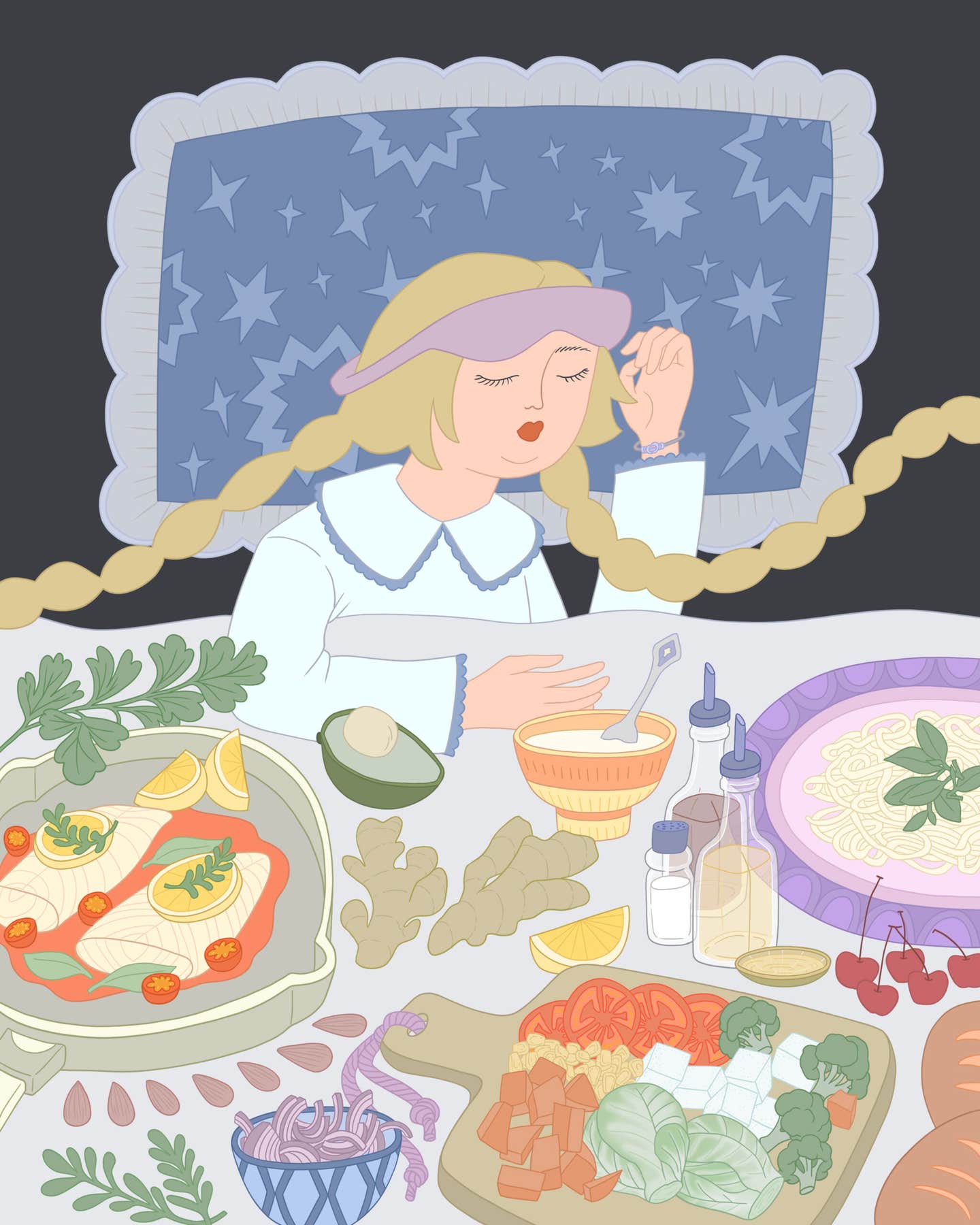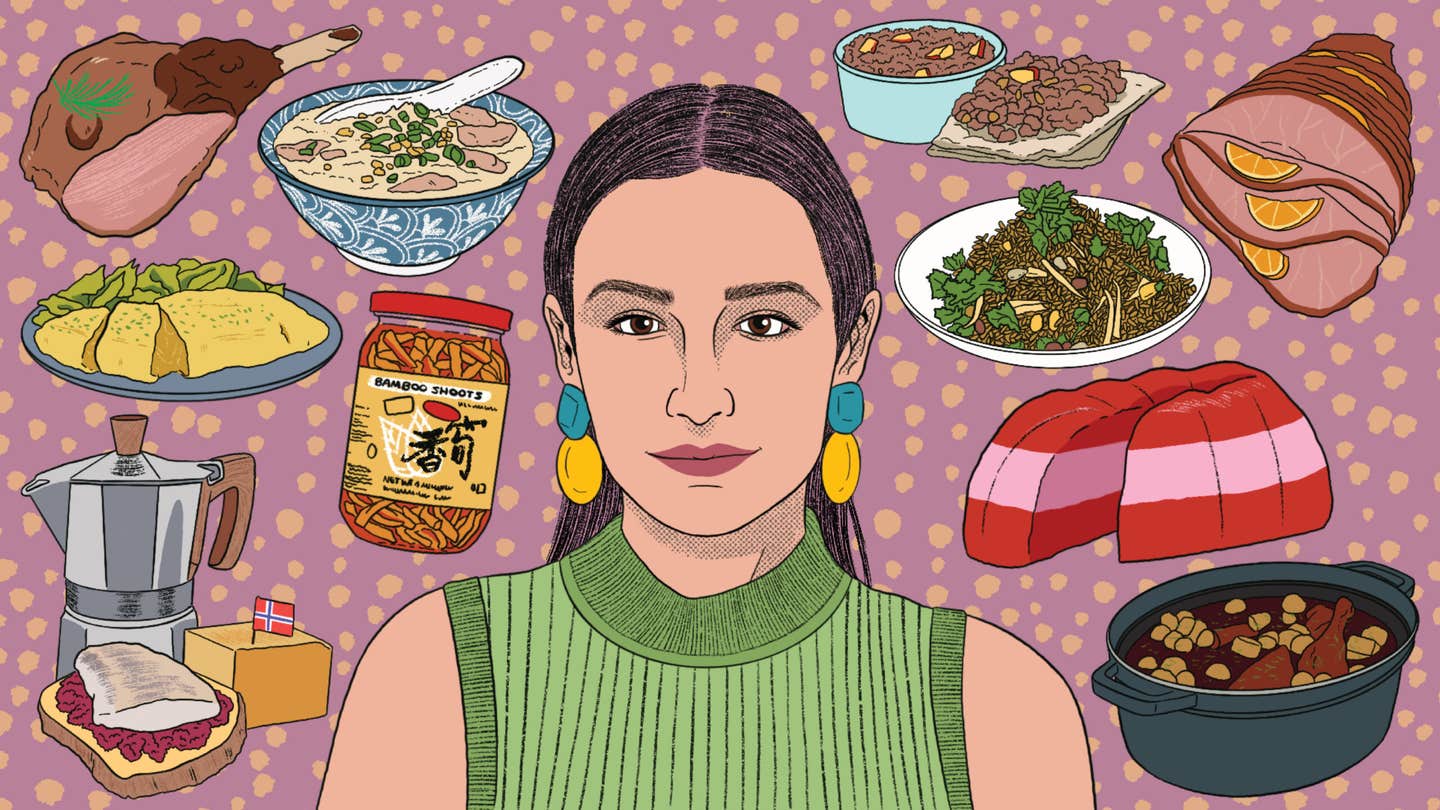Sara Moulton’s Long-Overdue Autopsy of 1990s Food Culture
A tell-all Q&A with the television star reveals unsung heroes, food trends we forgot about, and the sexist underbelly of early food TV.
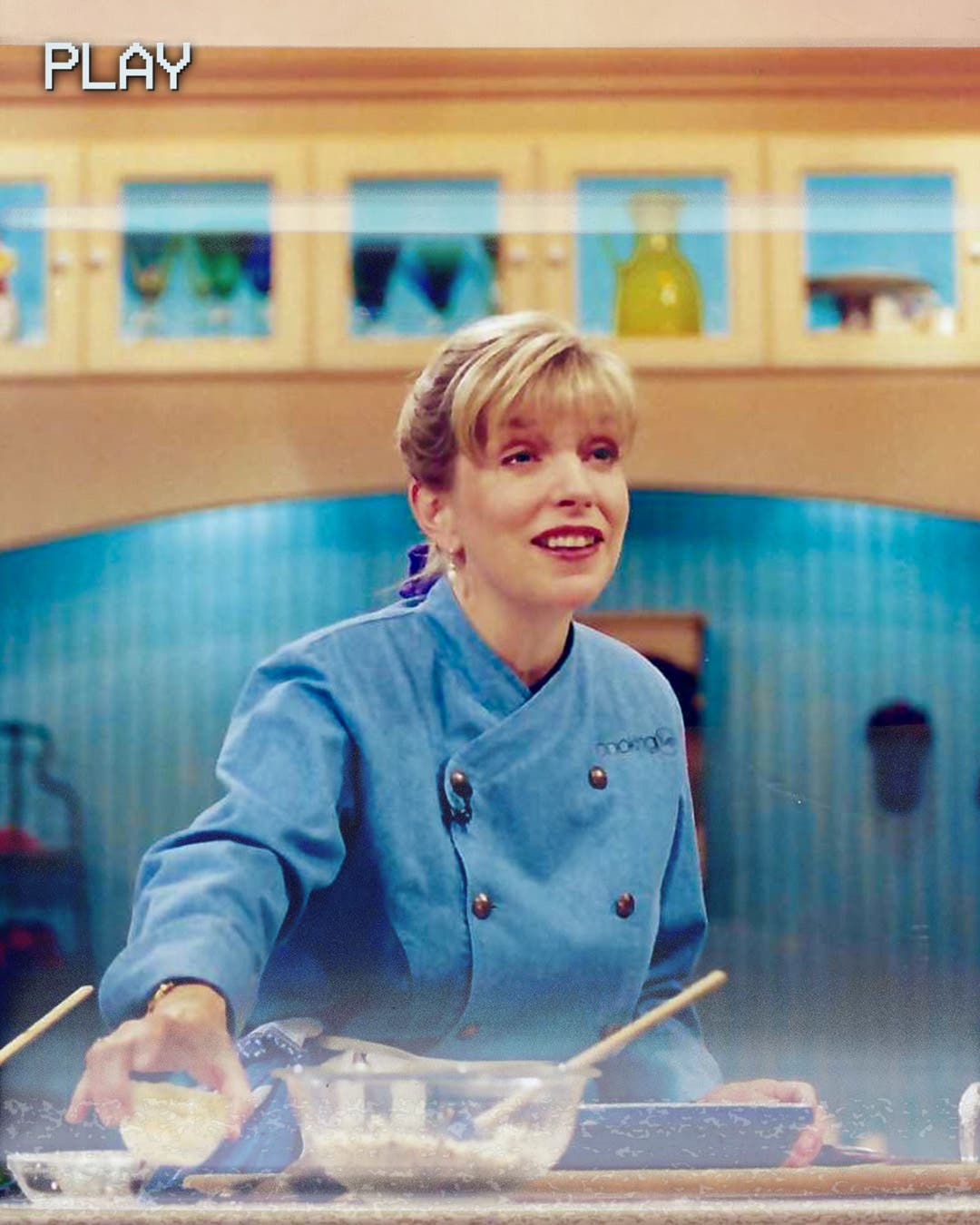
If you were a cooking show fan in the 1990s, you no doubt remember the characters. One hour, Emeril Lagasse was lighting a rum sauce on fire, while the next, Ming Tsai would be explaining the difference between spring rolls and egg rolls on East Meets West. But arguably the decade’s most skilled food TV star—the one whose show introduced the world to Michael Lomonaco, Aaron Sanchez, Anthony Bourdain, and umpteen other famous chefs—was Sara Moulton.
When I think about Moulton’s call-in show, Cooking Live, I remember the chef’s gentle demeanor, incisive cooking tips, and—of course—her signature blonde ponytail. Yet many viewers (myself included) didn’t realize that the Food Network gig was just another feather in Moulton’s already plumy cap. The chef graduated at the top of her class at the Culinary Institute of America, apprenticed at a Michelin-starred restaurant in France, worked the line at fine dining restaurants in Boston and New York City, and cooked professionally for Julia Child and Good Morning America. And decades before test kitchens were cool, she headed up the country’s most prestigious one, at the (defunct) Gourmet magazine. Translation? For more than half a century, Moulton has been a walking encyclopedia of cooking and food culture.
But you know what? I bet kids these days don’t know much about Moulton. Not that she isn’t busy—she hosts Sara’s Weeknight Meals on PBS, writes for various publications, and co-hosts a podcast on Milk Street Radio—she’s just not opening flashy restaurants or killing it on TikTok. Yet with ‘90s dishes suddenly trending in the form of Caesar salad wraps, pizza bagels, and espresso martinis, who better than Moulton, I thought, to weigh in on that decade’s food culture—and the lessons we might learn from it?
That’s how I found myself sitting across from the legend herself at a Manhattan cafe last month. We talked for two hours; she nursed a cappuccino while I typed. For the first time in my career, my interview subject showed up with more notes than I—pages and pages of bulleted anecdotes, which she flipped through as she spoke. Here are the highlights of our conversation.
Benjamin Kemper: When people say “‘90s food,” what comes to mind?
Sara Moulton: We learned so much in the ‘90s. That chiles have flavor and that chipotle is amazing. That there were many, many types of lettuces … Mesclun was king. There was both the rise of cilantro and the hatred of cilantro. Fruit salsas on fish. Lobster rolls. Penne alla vodka. And so many new cheeses. Until the ‘90s, most people knew only cheddar, brie, and boursin, but that changed with California cheesemakers like Laura Chenel. Avocados went mainstream, barbecue and grilling became more elevated, and finally some women were doing the grilling. Finally there were some women, period!
BK: What was new in the restaurant world?
SM: In the ‘80s, the hero of the food world was the writer, but in the ‘90s, it was solidly the chef. And they weren’t just cooking French food at New York restaurants—there were major players around the country. “Farm to table” was getting bigger. Alice [Waters] had done it from a French point of view, but people were finally celebrating American regional cuisine. We were also beginning to appreciate that every cuisine was regional through the work of people like Rick Bayless, Zarela Martínez, Josefina Howard, Mary Sue Milliken, and Diana Kennedy. We realized: There was no one French, Italian, or Thai cuisine.
BK: How did those trends translate into actual dishes?
SM: I wrote a few down. There was Anne Rosenzwieg and her chocolate bread pudding. Éric Ripert—his dishes were so fresh they popped—was putting warm vinaigrettes on fish. It was so unusual at the time! Nobu Matsuhisa made black cod trendy, and chiles had their moment in part thanks to Mark Miller and Stephan Pyles. Not many people know that George Germon and Johanne Killeen brought grilled pizza to the U.S. at their restaurant in Providence, Rhode Island. One thing I think about a lot is how Charlie Trotter was experimenting with and thinking about vegetables in ways that were way ahead of his time.
BK: How was cooking at home in the ‘90s different from today?
SM: This is obvious, but you couldn’t get ingredients on the internet yet, and that was a big handicap. When I was at Gourmet, if we listed an ingredient like sesame oil in a recipe, we had to add an asterisk to note that it was “available at specialty food shops.” But certain specialty ingredients were becoming mainstream, like balsamic vinegar, fresh fennel, and fresh herbs.
BK: What do you miss from that era? What has been lost?
SM: The idea that the ambiance is as important as the food. I don’t want to be jammed in, unable to hear a conversation, to be forced to eat standing up. That’s why I’m not a food truck person, even though I know they’re making some fantastic food. Wow, I just sounded old, didn’t I?
BK: Food Network was brand new in the ‘90s. What was it like working there?
SM: I came on board in ‘96. You have to remember, none of us had TV experience. We were petrified. Nervous wrecks. Even Emeril’s first tries were terrible. What I came to understand was, it’s one thing to be on TV with a host and another to be alone. This is going to sound strange, but to me it seemed vulgar, like too much attention on me. For my pilot I cooked fish meunière and asparagus—and never once smiled. When I held the asparagus up to the camera, it was shaking. But I limped along and got better over time. By 1999 I had two live shows on the network.
BK: What did you aim to achieve with your shows?
SM: At the time, more and more women were working, and it was hard to get dinner on the table. So I made it my mission to make people comfortable cooking during the workweek. Both my husband and I grew up with dinner on the table every night. It’s my religion. I trained at CIA, and when I graduated, I was a real snob and thought there was only one way to do things. Boy, was I wrong—I fell in love with home cooks taking their calls. Home cooks are no different from chefs, really: If you cook a recipe over and over again, you get to be damn good! A lot of times, callers taught me something.
BK: I remember there being a real gender divide. Emeril and Bobby Flay were doing their macho thing, grilling and lighting stuff on fire, and then there were shows like yours that were more geared toward busy moms.
SM: They didn’t really want women at Food Network. Every male chef had his own set, graphics, music, and tools. Not me. I had no oven, and the counter came up so high I had to stand on a riser. I remember recommending Michael Lomonaco for a show, and he got his own set.
Emeril and I were pretty good friends. He was a big talent. The next Jesus Christ. And it had to be a man—couldn’t be me. He had cars to drive him anywhere he wanted, while I had to get everywhere myself. I am grateful—I ended up on Food Network, and I did ultimately get my own set, but that’s how they were.
BK: There wasn’t much diversity, either, right? I’ve always wondered how many of the network’s higher-ups at the time were women and people of color.
SM: The executives were mostly men. And everybody was white.
BK: Wow. I guess that was the ‘90s.
SM: It was such a different time. Yesterday I was flipping through some ‘90s Gourmet magazines. I came across the word “Oriental” a few times—and I was like, really?
Another thing that makes me cringe is the whole fat police thing. It was a scam by the sugar lobby. It really impacted people. Everyone was looking at grams of fat and calories, and I created recipes with those things in mind.
BK: Can you leave us with a piece of advice?
SM: Nobody should ever stop learning, and if they do, they’re an idiot.
This interview was lightly edited for clarity and length.
Keep Reading
Continue to Next Story
